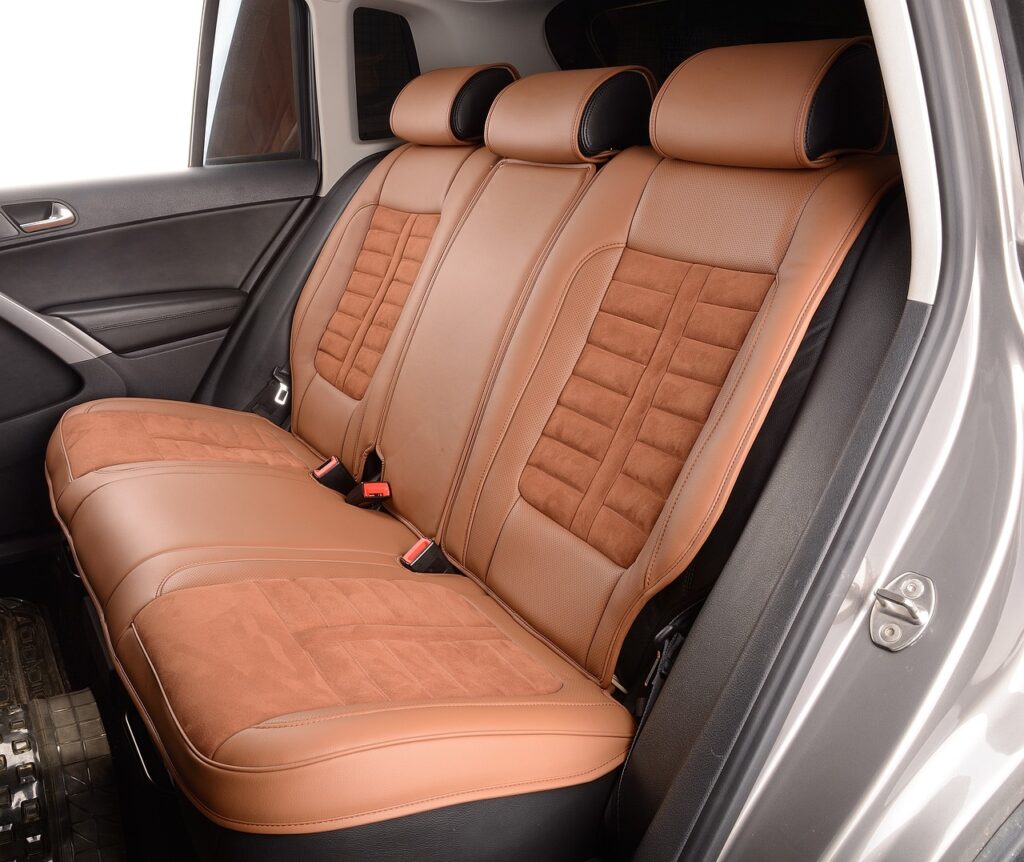
Okay, travelers, let’s be real for a moment. Whether you’re cruising down the motorway, soaring 30,000 feet above the clouds, or just navigating the bustling labyrinth of an airport, we’ve all been there. That moment when a fellow human’s actions push your patience right to the limit. It’s a shared experience, almost a rite of passage, for anyone who dares to venture outside their front door with others around. And guess what? You’re definitely not alone in feeling that simmering frustration.
Turns out, we Brits are not shy about our travel gripes! A fascinating survey quizzing British drivers on their passenger pet peeves laid it all bare, revealing some truly conclusive evidence that passengers can indeed really grate on motorists. And it’s not just car journeys – a deep dive into American air travel habits and even a candid Reddit thread started by a flight attendant herself have unveiled a treasure trove of airborne annoyances. From the subtle nudges that annoy to the blatant breaches of etiquette that leave even the most level-headed among us seeing red, the evidence is pretty clear: we all have our limits.
So, prepare yourselves, because we’re about to unmask some of the most common, most infuriating, and sometimes, most baffling passenger behaviors that make us all wonder, “Are you *that* passenger?” We’ve got a whole list of grievances to unpack, both on the road and in the sky, inspired by real drivers and travelers like you. Get ready to nod along, maybe cringe a little, and perhaps even vow to be a better passenger yourself after reading through these all-too-relatable travel traumas. Let’s dive in!
1. **The Infamous Backseat Driver: Why unsolicited advice grinds gears on the road.**
Ah, the backseat driver. Just uttering the phrase probably conjures up a specific image in your mind, doesn’t it? It’s that person, usually perched right behind you, who seems to possess an uncanny ability to commentate on your driving, offer unsolicited directions, and generally make you feel like you’re taking your driving test all over again. Our survey didn’t pull any punches on this one; “no backseat driving” was an expected appearance high up the passenger rule rankings, and for good reason, “because everyone knows there’s nothing more irritating than someone commentating on your driving.”
It’s not just about the ego, though, is it? When someone’s constantly piping up with critiques or alternative routes, it can actually be a huge distraction for the person whose primary job is to safely navigate a several-thousand-pound metal box through traffic. Over 50% of drivers admitted they’ve been a victim of backseat driving, which means this isn’t just a rare annoyance – it’s a full-blown epidemic. And let’s not even get started on “giving the wrong directions,” which had many of us nodding along in fierce agreement because, “let’s face it, it is very annoying.”
Perhaps it’s a power struggle, or perhaps some passengers genuinely think they’re helping. But for the person gripping the wheel, it can feel like a constant undermining of their competence and control. The road requires focus, and constant chatter about your driving or conflicting navigation instructions can seriously disrupt that. It’s clear that in the battle of who’s in charge, when it comes to directions, “the driver’s say is final,” with over 80% preferring to be in charge themselves.
When you’re the driver, you’re responsible for everyone’s safety, and that mental load is already heavy enough without a constant chorus of suggestions. So, next time you’re tempted to offer a hot take on someone’s merging technique or the fastest route, remember that sometimes, silence is truly golden. It allows the driver to concentrate, trust their judgment, and get everyone to their destination in one piece and with their sanity intact. Let’s all agree to let the GPS (or the driver) do its thing.

2. **The Litterbug & Mess-Maker: How crumbs and carelessness can ruin a ride for everyone.**
This one really gets under people’s skin, and honestly, it’s completely understandable. There’s a special kind of dread that washes over a car owner when they see a passenger unwrapping snacks, drinks, or anything that could potentially leave a trail of crumbs, wrappers, or sticky residue. Our survey confirmed this universal truth: “Littering and smoking are absolute no-nos as far as most drivers are concerned.” It’s not just about keeping the car tidy; it’s about respecting someone else’s property and their efforts to maintain it.
Consider the aftermath. Those tiny crumbs that somehow find their way into every crevice, the sticky spills that leave a permanent mark, or the discarded wrappers that get shoved into seat pockets, only to be discovered weeks later. It’s the silent agony of every car owner. And while some drivers might enforce a strict “no eating” rule, assuming the potential mess is the reason for this, it’s really about common courtesy. If you must snack, at least be mindful and dispose of your trash properly.
Then there’s the more extreme, but sadly not unheard of, situation of being sick in someone’s car. The survey noted that “Being sick” did seem a little harsh as a pet peeve, but ultimately, it was considered “fair enough.” While accidents happen, the dread of cleaning up after such an incident is enough to make any driver wary. It’s a reminder that anything that creates a mess, whether small crumbs or a full-blown emergency, is a source of anxiety and annoyance for the person whose vehicle it is.
Ultimately, keeping someone’s car clean is a simple act of respect. It shows you value their vehicle and their generosity in giving you a ride. So, before you unwrap that burger or pop open a soda, take a moment to think about the consequences. A small plastic bag for your trash can make all the difference, turning you from a dreaded mess-maker into a highly appreciated passenger. Let’s keep our shared spaces clean, folks, it’s really not that hard!
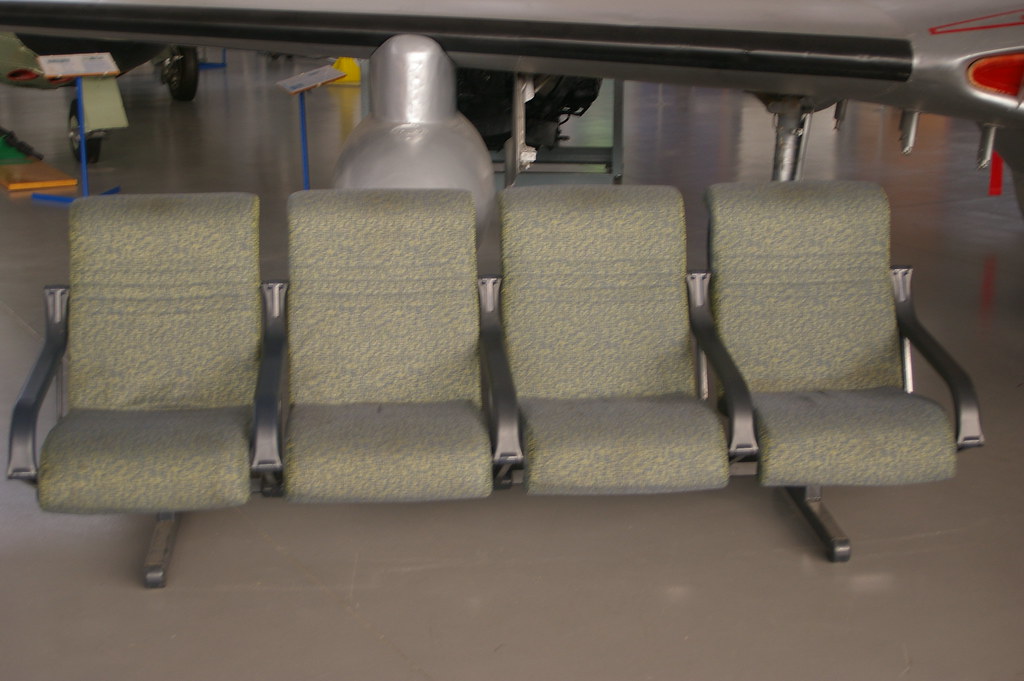
3. **The Relentless Seat Kicker: The universally hated rhythmic thud from behind.**
There are few things that can instantly elevate your blood pressure quite like the rhythmic, incessant thud, thud, thud against the back of your seat. It’s a universal irritant, whether you’re in a car or, perhaps even more acutely, crammed into a domestic flight. People’s biggest pet peeve when flying, according to one study, is when “the person behind them is kicking the back of their seat.” It’s a sensory assault that leaves you feeling agitated, trapped, and desperate for it to stop.
This isn’t just a minor inconvenience; it’s an invasion of your personal space and peace. With limited legroom and space, especially on flights, any added disturbance feels magnified. The kicker, often unaware or simply uncaring, might be doing it out of boredom, restlessness, or perhaps they’re just a child. Regardless of the reason, the impact is the same: a constant vibration that disrupts your attempt to relax, read, watch a movie, or simply exist without irritation.
What makes this pet peeve particularly frustrating is its seemingly deliberate nature. It feels like a direct assault on your comfort. You can’t escape it, and asking the offender to stop can be an awkward, sometimes confrontational, experience. It’s a testament to how easily one person’s thoughtless action can ruin the experience for another, especially in a confined environment where escape isn’t an option.
The simple act of keeping your feet to yourself is a fundamental courtesy in shared transport. It’s about recognizing that your movements impact others around you. So, next time you’re sitting behind someone, be mindful of your knees and feet. A little self-awareness can go a long way in preventing you from becoming the notorious “seat kicker” and preserving the peace (and sanity) of your fellow travelers. Let’s make sure our feet only touch the floor, not the seat in front!

4. **The Unofficial DJ: When a passenger’s personal soundtrack becomes everyone’s problem.**
Music is a beautiful thing. It can enhance a journey, set a mood, or simply provide a pleasant backdrop to your thoughts. But there’s a crucial distinction: *your* music and *everyone else’s* music. And when those lines blur, it creates an instant pet peeve that can quickly turn a harmonious trip into an unwelcome concert. In cars, “changing the music without asking” is a “huge no-no for many” drivers, a direct affront to the driver’s domain.
The annoyance is even more acute in the confined space of an airplane cabin. One of the top grievances shared by passengers, in a flight attendant’s genuine inquiry, was people “playing music or videos without earphones, creating an unwelcome concert for their fellow travelers.” Can you imagine being trapped for hours, trying to relax or work, only to be subjected to someone else’s questionable playlist or tinny movie dialogue? It’s a clear breach of shared etiquette.
The problem highlights a lack of consideration for others. While you might love your tunes, not everyone shares your taste, nor do they appreciate having it forced upon them. It’s a simple fix, too: headphones. They exist for a reason, specifically to allow you to enjoy your personal audio without disturbing those around you. Yet, many still choose to blast their devices, seemingly oblivious to the sonic chaos they create.
It’s a small act of courtesy that has a massive impact on the comfort of those around you. Whether you’re in a car, a plane, or any public space, if sound is coming out of your device, it means everyone can hear it. So, let’s make a pact: if you’re going to listen to anything, plug in those headphones. Your fellow passengers (and drivers) will silently thank you for it, and you’ll avoid becoming the unofficial, and very much unappreciated, DJ of the trip.

5. **The Safety Scofflaw & Feet-on-Dashboard Fiend: Why basic safety and respect for the vehicle matter.**
When you step into someone’s car, there’s an unspoken agreement of trust and respect. Part of that agreement involves adhering to basic safety protocols and showing consideration for the vehicle itself. Unfortunately, some passengers seem to miss this memo entirely, leading to pet peeves that aren’t just annoying, but potentially dangerous. A prime example? “Passengers not wearing seatbelts could easily land motorists in hot water with the law.” It’s a non-negotiable safety measure, not an optional accessory.
Beyond the legal repercussions, an unbelted passenger is a significant safety risk, not just to themselves, but to everyone else in the car in the event of an accident. It’s a burden of worry that no driver should have to bear. The driver is responsible for the safety of their occupants, and when someone flouts such a basic rule, it demonstrates a startling lack of awareness or care for both personal safety and the driver’s peace of mind.
Then there’s the classic visual: feet on the dashboard. It might seem like a harmless act of comfort, but it consistently ranks high in passenger rule rankings. Why? For starters, it’s a direct insult to the car’s interior, often leaving scuff marks or dirt. More importantly, however, it’s incredibly dangerous. In the event of an accident, an airbag deploying with feet on the dash can lead to horrific, life-altering injuries. It’s a potent mix of disrespect for property and blatant disregard for personal safety.
So, before you sprawl out or unbuckle, take a moment to consider the implications. These aren’t just arbitrary rules; they’re about safety, respect, and ensuring a comfortable environment for everyone. Buckling up and keeping your feet on the floor are simple, yet powerful, ways to show that you’re a considerate and responsible passenger. Let’s make every journey a safe and respectful one, shall we?
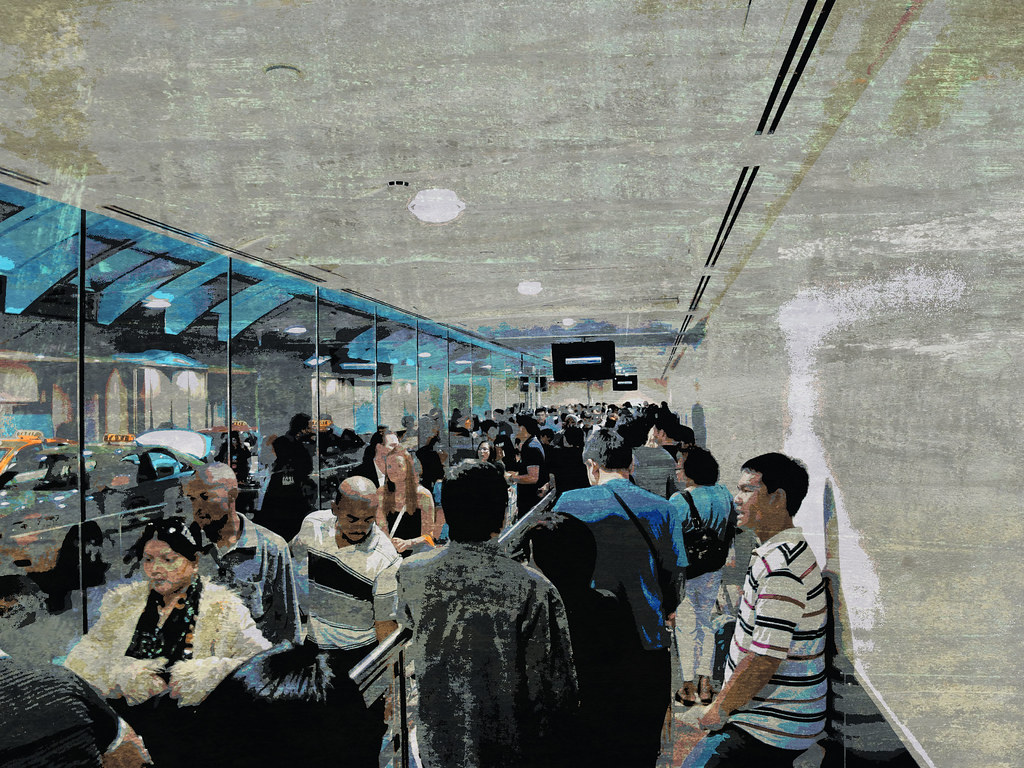
6. **The Audacious Queue Jumper & Boarding Zone Invader: The sheer unfairness of cutting lines, on land and in the air.**
Honestly, who doesn’t despise a queue jumper? It’s a pet peeve that spans across all modes of transport, from airport security lines to boarding gates, and even just waiting for a taxi. Our survey found “queue jumpers” to be the number one pet peeve of airport passengers, and for good reason. It’s a blatant disregard for order, fairness, and the precious time of everyone else who has patiently waited their turn. Whether they’re “sneaking into the queue” or having friends join them further up, it feels like a personal insult to every rule-follower.
This annoyance extends to the chaotic scenes often witnessed at airport boarding gates. There’s a designated boarding process for a reason, yet many passengers take it upon themselves to “crowd the boarding area before boarding,” as the Going survey highlighted. This creates unnecessary congestion, makes it harder for those whose zones *are* called to get through, and generally adds to the already palpable stress of air travel. It’s the dreaded “gate lice” phenomenon, and it truly drives people up a wall.
It’s a simple concept: if there’s a line, you join the back of it. If there’s a boarding zone, you wait for yours to be called. This isn’t rocket science; it’s basic social contract. The frustration stems from the perceived selfishness and entitlement of those who believe their time is somehow more valuable than everyone else’s. It slows things down for everyone and can lead to frayed nerves and silent glares.
So, let’s all collectively agree to respect the queue. Waiting your turn is a small but mighty act of consideration that contributes significantly to a smoother, less stressful experience for all travelers. Next time you’re tempted to sneak ahead or push your way to the front, remember the collective groan of exasperation you’re likely to provoke. Let’s make orderly lines a thing of beauty again, one patient passenger at a time!
Okay, buckle up, because we’re not done unmasking those cringe-worthy passenger habits just yet! While the road can be a minefield of annoyances, the airport and airplane cabin introduce a whole new level of shared human experience – and with it, a fresh batch of behaviors that can make even the most seasoned traveler want to scream into their neck pillow. Get ready for six more infuriating moments that make us wonder if common courtesy is truly a lost art.
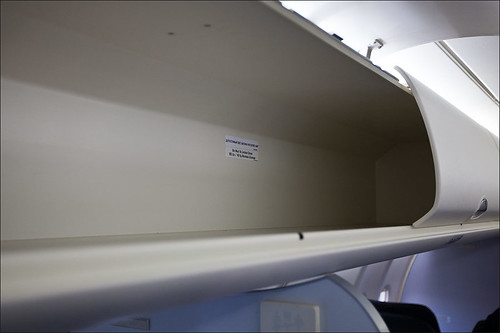
7. **The Overhead Bin Bandit: The chaotic scramble for shared storage space.**
Ah, the overhead bins. They’re meant to be a communal convenience, a haven for your carry-on, but for many, they become a battleground. There’s an unwritten rule about using the space above your *own* seat, right? Well, apparently, not everyone got that memo, and it consistently leads to a chaotic scramble that kicks off the flight with a dose of frustration.
The context is clear: “Overhead bin etiquette, or the lack thereof, was another hot topic.” It’s like a game of Tetris mixed with a race against time, where some passengers seem intent on claiming real estate far from their assigned rows. This often happens with “pre-boarders stowing their luggage in the first-class or comfort-plus bins,” or worse, simply not bothering to use the space directly above them.
The ripple effect is real, folks! When someone stuffs their bag two rows ahead, it means someone else might not have space directly above their seat, forcing their bag further back, and so on. This creates a “domino effect of inconvenience,” making deplaning a nightmare as people struggle to retrieve their distant belongings, holding up the entire aisle. It’s a simple act of consideration that could save everyone a headache.
So, next time you’re eyeing that glorious empty bin space a few rows up, take a moment. Could your bag fit above your own seat? Is it really necessary to claim prime real estate that isn’t yours? A little mindfulness about shared resources can make a world of difference for everyone on board. Let’s keep the overhead bin drama to a minimum, shall we?
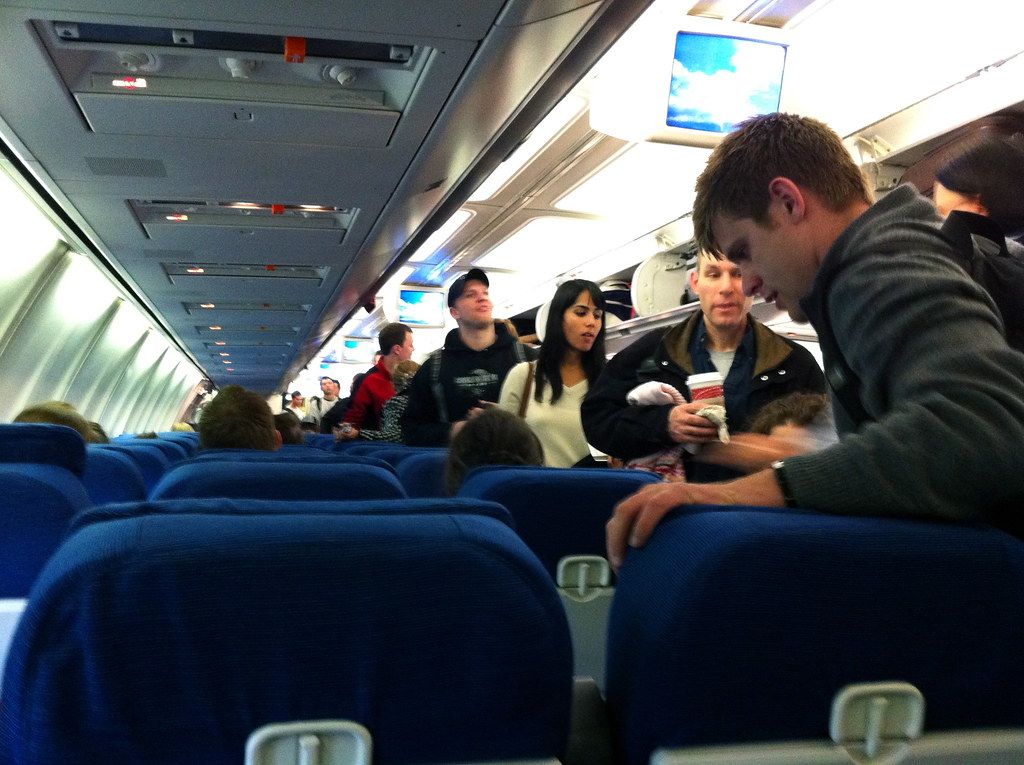
8. **The Personal Space Invader (Bags on Seats & Armrest Hogs): When your space isn’t just yours.**
We all crave a bit of personal space, especially in crowded airports and on packed flights. But alas, some travelers seem to operate under the assumption that every inch of available real estate is theirs for the taking. This often manifests in two classic forms: the bag-on-seat bandit and the dreaded armrest hog. It’s a quiet war for elbow room and a place to rest your weary self.
Picture this: you’ve just navigated security, you’re exhausted, and you spot a precious empty seat at the gate. But wait, it’s not actually empty – someone’s overflowing backpack or giant shopping bag has claimed it. Our survey says “Travelers who put their bags on seats in the airport” is a huge pet peeve, topping many lists of what *not* to do. It’s a selfish move that denies others the chance to sit, and honestly, your bag doesn’t need its own seat.
Then there’s the never-ending struggle for the middle armrest on a plane. It’s an awkward, unspoken negotiation that often ends with someone conceding defeat. The Going survey found that “Hogging the middle armrest (6 percent)” is a legitimate annoyance for travelers. Do you subtly nudge them? Do you pretend you’re stretching? It’s a tiny strip of plastic, but it represents a huge battle for comfort in a cramped cabin.
Ultimately, these actions boil down to a lack of awareness and courtesy. Your bag can go on the floor or under your seat, and that middle armrest is, by its very design, meant for *both* passengers. A little thought for the comfort and convenience of those around you can transform a frustrating situation into a more harmonious one. Let’s reclaim our rightful armrest territory and keep those bags off the seats!

9. **The Hygiene Hazard: Tackling everything from strong scents to visible sickness.**
Let’s be real, no one wants to catch a bug, or a strong whiff of something unsavory, when they’re trapped in a metal tube 30,000 feet up. The post-pandemic world has made us all a bit more sensitive to shared air and personal aromas, turning certain hygiene-related behaviors into major pet peeves. It’s about collective health and basic olfactory decency, people!
Topping the list of annoyances is “Having a cough or cold and not wearing a mask (27 percent),” according to the Going survey. It’s a clear indication that while the pandemic might be “in rearview mirror,” the fear of getting sick while traveling is very much present. Seeing someone openly coughing or visibly ill without any protective measures can send shivers down any traveler’s spine, turning a simple journey into a health anxiety marathon.
And then there’s the issue of personal aromas. The Going survey also noted that “Wearing strong perfume, cologne, or lotion (4 percent)” is a pet peeve. In a confined space, a little goes a long way, and overpowering scents can be genuinely nauseating for others. Add to that the more direct “bad BO” mentioned in a study – Americans would rather sit next to someone who talks non-stop than someone with bad body odor! It’s an unavoidable, often inescapable, assault on the senses.
Being mindful of your health status and personal scent profile is a fundamental act of respect for your fellow passengers. If you’re feeling under the weather, masking up is a thoughtful gesture. If you’re dousing yourself in fragrance, remember that not everyone shares your taste or tolerance. Let’s make our shared travel spaces healthier and more breathable for everyone, because no one wants an unexpected sensory adventure.
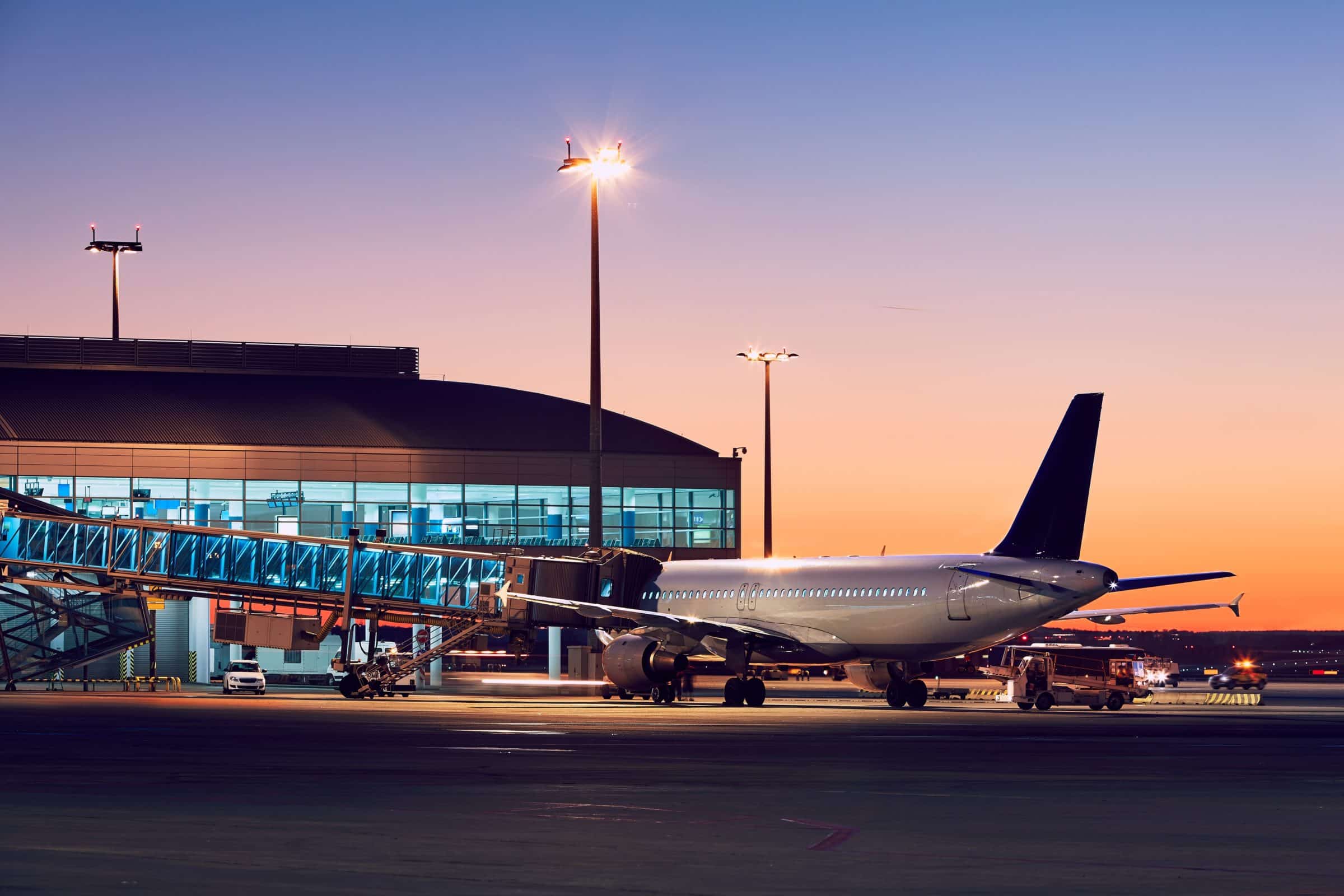
10. **The Airport Security Slowpoke: Unprepared travelers holding up the entire line.**
Airport security. It’s already a high-stress, time-sensitive gauntlet, and nothing amplifies that stress quite like the passenger who seems utterly bewildered by the process. From forgotten IDs to endless repacking, these slowpokes turn a quick checkpoint into an agonizing crawl, testing the patience of everyone behind them. It’s a pet peeve so common that many Americans would “break open the piggy bank to bypass” TSA entirely!
The culprits are many: “The ones who don’t have their ID ready” at the critical moment, as if showing identification at an airport is a shocking new concept. Or “People who don’t understand or follow security rules,” blissfully unaware of the liquid limits or the need to remove electronics. “Travelers who set off the metal detectors at security” due to ignored instructions also get a special shout-out.
But the agony doesn’t end at the scanner. Oh no. The post-X-ray conveyor belt area often becomes a bottleneck thanks to “Travelers who overpack and then repack the SECOND their stuff is off the X-ray conveyor belt.” Seriously, folks, there are benches and open spaces just a few feet away! And let’s not forget “People who don’t stack their trays after going through security,” leaving a messy trail for the next poor soul.
The solution is simple: a little preparation goes a long way. Have your ID and boarding pass ready. Know the rules for liquids and electronics. And for the love of all that is efficient, please, step aside to repack your belongings! You’ll not only make your own journey smoother, but you’ll earn the silent (and very grateful) thanks of hundreds of travelers who just want to get to their gate without an unnecessary delay. Let’s get through security like pros, not confused tourists!
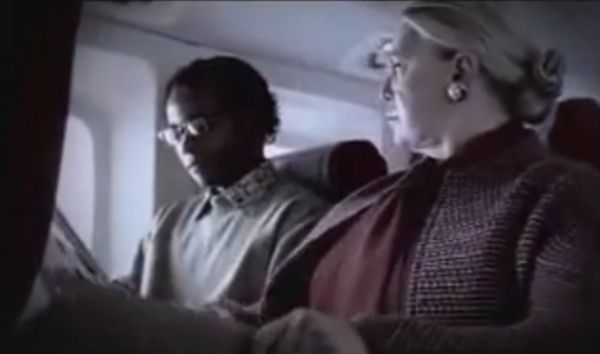
11. **The Discourteous Passenger: Being rude to staff or forcing unwanted conversations.**
Travel can be tough on everyone – passengers and staff alike. But there’s absolutely no excuse for rudeness or for forcing interactions on unwilling participants. These discourteous behaviors chip away at the collective peace of the journey, making an already challenging environment even more unpleasant for those trying to do their jobs or simply get from point A to point B in quiet contemplation.
First up, the disrespect directed at the frontline heroes of travel: “when passengers are rude to the airport staff.” Flight attendants, gate agents, security personnel – they’re working hard, often under stressful conditions, and a little kindness goes a long way. Former American Airlines CEO Doug Parker sagely advised, “[j]ust be nice to the people that are out there working,” emphasizing that a simple “thank you” can genuinely enhance the experience for everyone.
Then there’s the chatty Cathy or Kevin who simply won’t take a hint. “Talking to a fellow passenger who clearly doesn’t want to engage (3 percent)” is a pet peeve identified by the Going survey. We’ve all been there: headphones on, book open, eyes closed – clear signals that we’re not in the mood for an impromptu therapy session or a detailed life history. Yet, some passengers persist, oblivious to the social cues.
Basic civility and respect are the grease that keeps the travel machine running smoothly. Being kind to staff, understanding their hard work, and respecting the boundaries of your fellow travelers are not just suggestions; they are fundamental tenets of good passenger etiquette. Let’s make every interaction a positive one, and remember that sometimes, silence is truly golden.
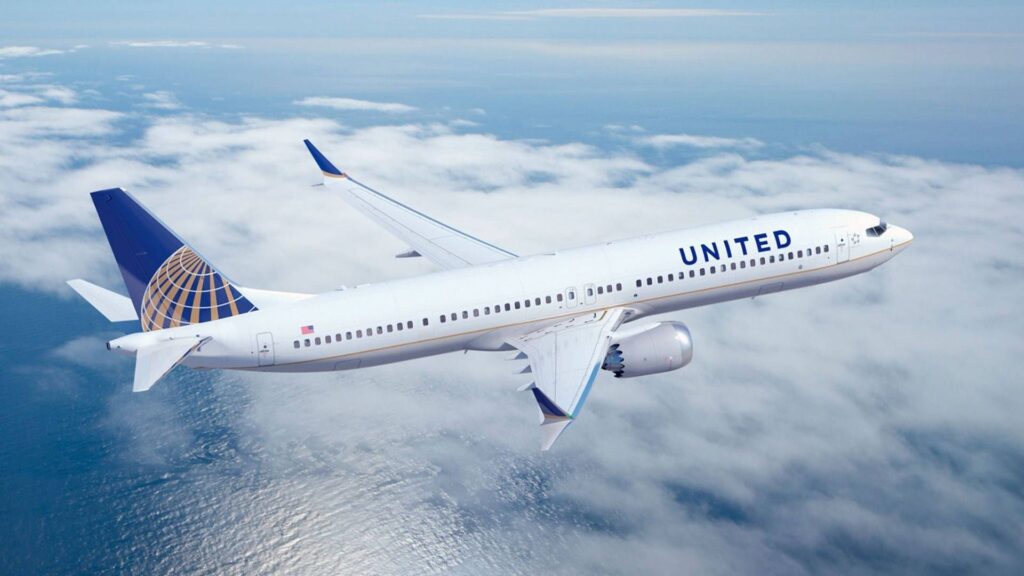
12. **The Post-Landing Stand-Upper: The impatient rush to deplane, despite all logic.**
The plane has touched down, the applause (from a surprising 40.8% of Americans, apparently!) has died down, and then it happens. The instant the wheels hit the tarmac, or perhaps a nanosecond after, a collective sigh of impatience sweeps through the cabin as a significant portion of passengers springs to their feet. This phenomenon, which 62.8% of Americans find annoying, is the dreaded post-landing stand-up.
What’s the rush, people? The doors aren’t open yet. The jet bridge isn’t connected. You’re not going anywhere faster by standing up and craning your neck to stare at the back of someone else’s head. It’s a seemingly illogical scramble that creates immediate congestion in the aisles, makes it harder for everyone to grab their overhead bags, and frankly, doesn’t accomplish a single thing beyond making everyone else feel claustrophobic.
The Going survey confirms this universal truth, listing “Standing up as soon as the flight lands (7 percent)” as a definite pet peeve. It’s almost as if some travelers believe that by standing up, they can magically teleport themselves off the plane. Instead, they just create a human wall, often bumping into the seats, and making the entire deplaning process feel more frantic than it needs to be.
So, let’s take a collective deep breath. The plane isn’t going anywhere until the captain says it’s safe to deplane. Stay seated, relax, and wait for your row to be called. A little patience will make the exit smoother for everyone and ensure you don’t accidentally become *that* passenger everyone rolls their eyes at. Let’s make our grand exits with grace, not frantic urgency!
Phew! We’ve journeyed through the wild world of passenger pet peeves, from backseat driving on the open road to the overhead bin battles in the friendly skies. It’s clear that whether we’re in a car, an airport, or soaring above the clouds, a little awareness, a dash of courtesy, and a whole lot of common sense can go a long, long way. So, next time you’re hitting the road or taking to the air, pause for a moment. Are *you* that passenger? Or are you part of the solution, making travel a little less chaotic and a lot more enjoyable for everyone around you? Let’s all strive to be the kind of passenger we’d love to sit next to, shall we? Happy travels, and remember, kindness is always in season!

